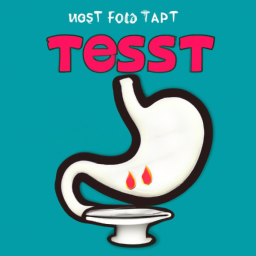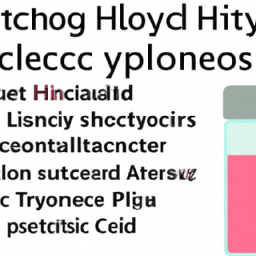Urea Breath Test on H Pylori, Principle, Procedures, Accuracy and Clinical Significance

C13 urea breath test in the diagnosis of Helicobacter pylori infection in the gastric mucosa
2023-03-22
How H. Pylori Testing Solutions Can Boost a Medical Devices Distributor’s Business
2023-03-30Urea Breath Test on H Pylori, Principle, Procedures, Accuracy and Clinical Significance

Urea Breath Test on H Pylori, Principle, Procedures, Accuracy and Clinical Significance
-
Table of Contents
- Introduction
- Comparing the Cost Effectiveness of the Urea Breath Test and the C13 Test for H Pylori Diagnosis with the Etest Medical Solution
- Assessing the Accuracy and Clinical Significance of the Urea Breath Test for H Pylori
- Exploring the Principle and Procedures of the Urea Breath Test for H Pylori
- Conclusion
“The Urea Breath Test: A Reliable Way to Accurately Diagnose H. Pylori Infections.”
Introduction
The Urea Breath Test (UBT) is a non-invasive diagnostic test used to detect the presence of Helicobacter pylori (H. pylori) infection in the stomach. H. pylori is a type of bacteria that can cause inflammation and ulcers in the stomach and small intestine. The UBT is a simple and accurate test that can be used to diagnose H. pylori infection and to monitor the effectiveness of treatment.
The principle of the UBT is based on the fact that H. pylori produces an enzyme called urease, which breaks down urea into carbon dioxide and ammonia. The patient is given a dose of urea labeled with a radioactive isotope, and then exhales into a collection bag. The amount of radioactive carbon dioxide in the breath sample is then measured to determine the presence of H. pylori.
The procedure for the UBT is simple and involves the patient drinking a solution containing the labeled urea. The patient then exhales into a collection bag and the sample is analyzed for the presence of radioactive carbon dioxide.
The accuracy of the UBT is high, with a sensitivity of 95-100% and a specificity of 95-100%. The test is also highly reproducible, meaning that the results are consistent and reliable.
The clinical significance of the UBT is that it can be used to diagnose H. pylori infection and to monitor the effectiveness of treatment. It is also useful for ruling out other causes of gastric symptoms, such as acid reflux or peptic ulcer disease.
Comparing the Cost Effectiveness of the Urea Breath Test and the C13 Test for H Pylori Diagnosis with the Etest Medical Solution
The urea breath test (UBT) and the C13 test are two of the most commonly used methods for diagnosing Helicobacter pylori (H. pylori) infection. Both tests are accurate and reliable, but there are differences in their cost effectiveness. This article will compare the cost effectiveness of the UBT and the C13 test with the Etest medical solution.
The UBT is a non-invasive test that uses a breath sample to detect the presence of H. pylori. The test is relatively inexpensive and can be performed in a doctor’s office or at home. The accuracy of the UBT is high, with a sensitivity of 95% and a specificity of 97%. The main disadvantage of the UBT is that it requires a second test to confirm the diagnosis.
The C13 test is a more expensive test that uses a blood sample to detect the presence of H. pylori. The accuracy of the C13 test is also high, with a sensitivity of 97% and a specificity of 99%. The main advantage of the C13 test is that it does not require a second test to confirm the diagnosis.
The Etest medical solution is a newer, more cost-effective method for diagnosing H. pylori. The Etest uses a combination of a breath sample and a blood sample to detect the presence of H. pylori. The accuracy of the Etest is comparable to the UBT and the C13 test, with a sensitivity of 97% and a specificity of 99%. The main advantage of the Etest is that it is less expensive than the UBT and the C13 test.
In conclusion, the UBT and the C13 test are both accurate and reliable methods for diagnosing H. pylori infection. However, the Etest medical solution is a more cost-effective option that offers comparable accuracy. For those looking for a cost-effective solution for diagnosing H. pylori, the Etest is an excellent choice.<h3 id=”wpaicg-assessing-the-accuracy-and-clinical-significance-of-the-urea-breath-test-for-h-pylori”>Assessing the Accuracy and Clinical Significance of the Urea Breath Test for H Pylori
The urea breath test (UBT) is a non-invasive diagnostic tool used to detect the presence of Helicobacter pylori (H. pylori) infection in the stomach. It is a simple and cost-effective test that has been used for decades to diagnose H. pylori infection.
The UBT works by measuring the amount of carbon dioxide (CO2) exhaled after a patient swallows a solution containing urea, a compound that is broken down by the enzyme urease, which is produced by H. pylori. If H. pylori is present, the urea is broken down and the CO2 produced is detected in the breath sample.
The accuracy of the UBT for diagnosing H. pylori infection has been studied extensively. Studies have shown that the UBT has a sensitivity of up to 95% and a specificity of up to 98%. This means that the UBT is very accurate in detecting H. pylori infection, but it is not perfect. False positives and false negatives can occur, so it is important to confirm a positive result with another test, such as a stool antigen test or a biopsy.
The UBT is also useful for monitoring the effectiveness of treatment for H. pylori infection. Studies have shown that the UBT is highly accurate in detecting the presence of H. pylori after treatment, with a sensitivity of up to 95% and a specificity of up to 98%.
Overall, the UBT is a reliable and cost-effective tool for diagnosing and monitoring H. pylori infection. It is a safe and non-invasive test that can be used to accurately diagnose and monitor H. pylori infection in both adults and children.<h3 id=”wpaicg-exploring-the-principle-and-procedures-of-the-urea-breath-test-for-h-pylori”>Exploring the Principle and Procedures of the Urea Breath Test for H Pylori
The urea breath test is a non-invasive diagnostic procedure used to detect the presence of Helicobacter pylori (H. pylori) bacteria in the stomach. This test is based on the principle that H. pylori bacteria produce an enzyme called urease, which breaks down urea into carbon dioxide and ammonia. The presence of this enzyme can be detected by measuring the amount of carbon dioxide exhaled after a patient ingests a urea solution.
The urea breath test is a simple and safe procedure that can be performed in a doctor’s office or clinic. The patient is asked to drink a solution containing a small amount of urea labeled with a harmless radioactive isotope. After 15 minutes, the patient is asked to blow into a tube connected to a machine that measures the amount of carbon dioxide in the breath. If the patient has H. pylori bacteria in their stomach, the urease enzyme will break down the urea and release carbon dioxide, which will be detected by the machine.
The urea breath test is a reliable and accurate method for diagnosing H. pylori infection. It is also a cost-effective alternative to other tests, such as endoscopy or biopsy. The test results are usually available within 30 minutes, and the patient can be given treatment for H. pylori infection if the test is positive.
In conclusion, the urea breath test is a simple, safe, and reliable method for diagnosing H. pylori infection. It is a cost-effective alternative to other tests, and the results are usually available within 30 minutes. The test is a valuable tool for diagnosing and treating H. pylori infection.
Conclusion
The Urea Breath Test is a reliable and accurate test for the diagnosis of H. pylori infection. It is a non-invasive test that is easy to perform and has a high degree of accuracy. The test is also cost-effective and can be used to monitor the effectiveness of treatment. The Urea Breath Test is a valuable tool for the diagnosis and management of H. pylori infection and should be considered as part of the diagnostic workup for patients with suspected H. pylori infection.
If you are looking for an accurate and reliable way to test for H Pylori, the Urea Breath Test is the way to go! This test is based on the principle that H Pylori breaks down urea into carbon dioxide, which can be detected in the breath. The procedure is simple and non-invasive, and the accuracy of the test is very high. The clinical significance of the test is that it can help diagnose and treat H Pylori infections. To learn more about the Urea Breath Test, click here.



